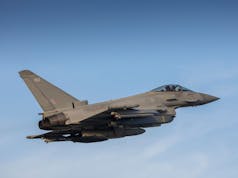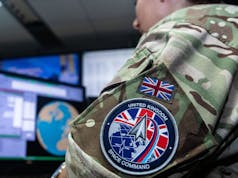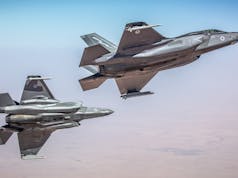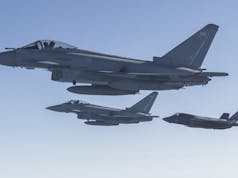The Royal New Zealand Air Force is set to operate the C-130J Super Hercules after the first announcement of 2019 Defence Capability Plan expenditure.
The announcement, which came as part of a NZ$20 billion shopping list from Defence Minister Ron Mark, identified the replacement of the air force’s existing C-130H Hercules aircraft as the current top priority for defence investment.
The Air Force’s five existing C-130H aircraft were originally procured in two batches in the 1960s and despite having undergone several refurbishments to keep them going are now showing their age.
Outlining the need for replacement the defence minister said:
“The current fleet is increasing in cost to maintain, and is taking longer to put through maintenance. Tactical air transport capability is one of the highest value assets available to New Zealand, offering huge utility to the community and nation, enabling movement of personnel and cargo around the country, the South Pacific, down to Antarctica and all around the globe.”
Though final numbers are not yet confirmed, the Defence Ministry has requested pricing options for five of the C-130J-30 extended fuselage models allowing for a like-for-like replacement in terms of numbers. The longer aircraft offering improved cargo capacity compared to its predecessors.
The C-130J-30 beat out competition from the Airbus A400M and the Embraer KC-390, with one proposal offering to wet-lease KC-390s on a corporate contract. It is also understood that Kawasaki offered the Japanese C-2 transport and that the smaller C-27J Spartan, also operated by Australia, was considered.
Owing to the urgent need for the replacement aircraft Cabinet made the decision to bypass the formal tendering process. The Super Hercules being selected based on its proven reliability and international reputation. Interoperability with other Commonwealth air forces and the American military is also likely to have been a major factor.
As a small air force the RNZAF relies heavily on overseas exchanges for its pilots and aircrew to build experience, with a common platform offering increases opportunities for cooperation.
Entry to service for the new aircraft is anticipated to be 2023.
The Air Force’s mixed use freight-passenger 757-200 aircraft are also due for replacement under the Defence Capability plan which will also see the Navy’s transport capability boosted by an additional “enhanced sealift ship” and a replacement for current flagship HMNZS Canterbury. Other programmes announced last year and reaffirmed in the 2019 plan will also see the Air Force receive four new P-8A Poseidon maritime patrol aircraft as well as long-range UAVs for patrolling its massive EEZ.













They really need a a couple of squadrons of fighter aircraft… Gripens or F16s come to mind…
Cheers!
Why? New Zealand is literally as far away from anywhere as you could imagine! MPA’s, patrol ships, air and sea lift capacity to assist the pacific island nations…
Where does the airborne threat come from?
Agreed, if any nation does not need a combat air force its New Zealand. One proposal that’s makes a little sense is for 4 business jets with AMRAAM and good air sensors sovereignty patrol. But I doubt the RNZAF is concerned about this. The RNZAF hardly needs a squadron of dogfighters.
Very simple – From the PLAN and and PLAAF when China overruns Australia, defeats and destroys the USN and USAF in the Pacific, defeats and overruns Japan, and takes Taiwan. Far fetched? Hardly. Well within the realm of possibility as the USN’s own wargaming has shown… Also heavily wargamed by the PLA as well…
Cheers.
Errr….so what use would a single squadron of aircraft be to the RNZAF in that hypothetical world.
If the Chinese have just beaten the Japanese, Taiwanese, United States and Australia what use would that single squadron be?
Absolutely barking mad.
Think someone needs to step away from the sugar!
The most obvious use of a RNZAF strikefighter wing would be for air defense and maritime strike in conjunction with the RAAF and USAF in defense of the Austro Pacific region – contributing to one’s own defense is hardly a radical idea (or shouldn’t be). In a full slippery slope scenario as I referenced above ( wargaming has shown this particular one to have more than a reasonable chance of being the outcome of a full scale Pacific theater war) with the ongoing Chinese buildup and allied political waffling.
NZ would be a redoubt of sorts with the remnant of several allied armed forces remaining in the region holed up there (case in point would be the adhoc allied fleet destroyed by the Japanese at the Battle of the Java Sea). They would consolidate there and try to hold out until there was a resolution of the conflict – one way or another. A wing of RNZAF fighters would be of tremendous use despite small numbers in such a situation – just as there would be many uses for them in less dire straights… There are rarely happy endings anymore and to believe otherwise is a folly IMHO
Cheers!
With the recent (overdue) NZ$20b budget allocated for NZDF military upgrades, the issue most pressing remains the security of the expansive NZ Economic Zone through monitoring and intervention.
To that end, NZ will be investing in UAVs to support their new Poseidons to monitor activity, but the reliance on their 2 OPVs and 2 ANZAC frigates as their intervention assets remains a obvious weak point. They have to cover a vast area, and balance time for replenishment and refits/upgrades (eg at the moment the RNZN does not have an ANZAC frigate available!).
The constabulary and customs roles for these craft in the RNZN will remain their primary activity, but hidden beneath the waves is the emerging issue of submarine incursions, which are expected to exponentially increase across the South Pacific, especially along shared trading routes.
IMO there is a real need for an significant uplift in the RNZN ASW capability, and the number of surface vessels to deal with this. This increase would be greatly welcomed by Australia and the US certainly, but also other South Pacific nations.
Where my argument is going, is that the threat profiles that NZ faces in the short, medium and long term will be maritime, rather than air defence.
Well I suppose I better start learning Chinese then….seems like i’m Doomed here in Australia….
Ghee I thought the biggest threat to New Zealand would have been some penguins coming in from Antartica and perhaps some Chinese boats fishing illegally…..
Unless you’ve actually been to New Zealand, I think you don’t realise just how remote it is…. it is literally the furthest point away from anywhere…
As to New Zealand’s military, it is extremely small…. I mean extremely…. but i’m Sure any military would be quite happy to have a battalion of Maori/pacific islanders to back them up…
When the U.S. Army deployed the Army Reserve’s 100th Battalion of the 442 Infantry Regiment (the famous “Go For Broke Nissei Regiment of WWII fame and the only infantry outfit in the Army Reserve) to Iraq in the early 2000’s, the Bn’s high percentage of very physically impressive native Pacific islanders and Polynesians (it’s based in Hawaii with units scattered throughout U.S. Pacific territories) caused one Iraqi tribal chief to ask: “What has HAPPENED to the U.S. Army?!” when confronted with the new arrivals taking over his sector of the country. 😀
Cheers!
Just in…
https://www.militarytimes.com/news/pentagon-congress/2019/06/10/new-zealand-plans-to-withdraw-all-troops-from-iraq-by-next-june/
Very professional troops, I always enjoyed working with Kiwis both in NZ and in the ME. One of the A team commanders I once worked with in the 7th SFG was the first American to pass the New Zealand SAS selection course…
Cheers!
Well, to cause consternation in any enemy formation, kick a rugby ball into the middle of the enemy formation and watch them storm any position!
In which case Helions, little NZ with a few F16s ain’t going to last very long…
it is mostly thanks to the massive distances spanned by NZ’s maritime economic zone – and the fact that two Frigates can’t be everywhere at once. The new P8s will offer some more rapid response capability in this space, but they are themselves vulnerable assets. They would really be dependant upon RAAF or USAF fighter escorts if push ever came to shove. [Former Prime Minister] Ms. Clark’s decision to scrap the RNZAF’s former air strike wing (A4s), and cancel the replacement contract with the USA for 28x F-16s, whilst it was actually already underway, has to be one of the blindest and foolish decisions ever made by a government remiss as to the need for a defence force. The infrastructure it destroyed (read cost invested in trained fighter pilots, engineering bases etc) was a terrible loss for New Zealand. This being coupled at the time with a callous disregard for diplomatic relations with an historic ally (USA), and hopeless naivety around defence, were sadly symptomatic of an ideology of New Zealand’s political left-wing blindly ignorant as to where its freedom actually comes from – and how easily it could be ceded to Chinese influence, toward which it is also alarmingly cosy.
Oh dream on Joseph. The decision to cancel the F-16 purchase was a controversial one but it was still logical. The cost of maintaining a strike wing for the RNZAF was significant and without an air to air refueling capability, the aircraft were of limited use in the South Pacific.
It might come as a surprise to you, but New Zealand does have an independent foreign policy. The country’s nuclear free policy is a result of defiant French nuclear testing in the South Pacific and the USA’s refusal to confirm or deny the presence of nuclear warheads on their visiting warships.
Chinese aircraft are certainly not capable of reaching NZ’s backyard to attack the country without first passing by US, Australian & Singaporean forces.
New Zealand plays its part on the world stage and makes regular contributions to allied deployments across the globe. Ultimately though, it’s up to Kiwis to decide on their foreign policy and not overseas critics who do understand their needs or environment that country is faced with.
apologies for late reply and for not having made it more obvious Matt but I am a New Zealander; and also also an NZ taxpayer, fyi. Thanks for the insightful lecture about my country though – an amusing read (vested interest in the RAF having our pilots?). No nuclear was short-sighted hysteria and also did far more damage than good; read our trashed relations with the United States – the military power to whom we chiefly owe our independence, democracy and freedom from fascism after the UK retrenched from the Pacific all those decades back.. Also – I might add that China is currently in the process of wooing and plying our backyard neighbors with piles of cash into allowing a fairly large graving dock to be built, under the Belt & Road initiative, which totally won’t be used for a Chinese aircraft carrier.. at all…
Agree 100%. As little as the threat would seem to be on paper it is simply wrong that such an advanced first world nation should not have at least a token front line attack/air-defence capability. Countries like Ireland and New Zealand have a free ride from their near neighbours in this respect-Ireland in particular a country that still harbours many elements hostile to the UK, is happy to accept air defence from the RAF and-“gift horse in mouth”, complain about RAF intrusions in to their Airspace!!! Also, there is a question of National pride. NZ should rather prioritize the replacement of their long gone Skyhawks over other items in their big shopping list above. The F 16 would be my choice-still a potent fighter in service worldwide and with parts and service still affordable and available.
The easier route for NZ is to revisit the 2018 proposal from Singapore to station a squadron of their F-15SGs in New Zealand for training purposes, since Singapore needed a larger maritime space to practice. This would have provided excellent and regular cross training with all of the NZDF, and resulted in a shared air defence umbrella over the the ‘land of the long white cloud’.
The proposal was unfortunately shot down (pun intended) by resident’s noise concerns, and G2G issues on who pays for what.
NZ is too small to field its own expensive fast jet airforce, but IMO it could benefit from stepping up its light attack jets by expanding the mission load of their T-6 Texan II trainer. Their Special Forces are very highly respected, and to have a light attack jet that provides cover and strike capability to these expeditionary forces would be a great benefit (assuming they can twist the RAAF’s arm to load them into a few C-17s). As the ADF do not have this capability, it allows the RNZAF to provide a niche service that would greatly benefit any joint antipodean special forces.
Twin tiger-good post. Residents noise concerns!!!! Lucky there were no major residents noise concerns just prior to the Battle of Britain. A joint effort would make sense. Perhaps a better bet would be with Australia with whom NZ has close ties although Singapore as a fellow Commonwealth and Asian defence partner would also do. Some kind of joint control would be a key ingredient and I suspect however, that it would e easier to set up with Australia
Thanks Geoff,
The ADF regularly sends its aircraft and ships ‘across the ditch’ to train with the NZDF, and this won’t change, but there is no interest or need in making its presence permanent (or semi-permanent).
Effectively, the RNZAF bases can also become FOBs for the RAAF fast jets should there be any need or request.
The Singapore option really made some sense as a) they can use the training space, and b) there is a strong 2017 G2G initiative to have Singapore integrated into an Australia/New Zealand triad, economically and militarily. In fact Singapore and Australia already share a number of common military assets, and regularly interact. Singapore has an airforce training squadron in Pearce WA, and ‘lease’ a large tract of land in Queensland for artillery and army training.
The Singapore offer is still there I believe, but it needs a concerted push from NZ to make it happen.
..maybe move the noise complainees to Pitcairn? They could do with some new people and it’s bound to be a lot quieter there 🙂
Cheers
Wow! I’m surprised. I really thought they would go for the A400M. Tailor made for that part of the world and distances involved. Big drop off for Airbus there!
The A400M was seriously considered and the C2 and the KC390 were looked at but with the limited funds and the reasons given by the minister about the C130J 30 being a proven design, the tender was by passed and the C130J 30 was chosen. As a side note and not official I have heard someone quote an ancient Chinese proverb “the bamboo bends in the direction from where the wind blows strongest” suggesting friendly pressure from somewhere.
So … bamboo bends into the wind?
Yep, and drill a few holes down the stem, it will play a tune for you!
You shouldn’t be, the C-130J is low risk, fits into their current infrastructure, more than meets their requirements and actually in long fuselage form be a capability enhancement.
With a tight defence budget and some big ticket procurement ongoing the safe choice is probably the best one.
Whilst I think it was a pity they dropped their fast jet capability (personally I think they should have gone for something more similar to their A4 like the L-159 ALCA) it is a long done thing. Being able to offer a base for allied jets to deploy from in an emergency is a better bet.
The Americans will not allow Lockheed to be beaten on price as they need the production line to keep going whereas the A400M while being a far superior aircraft it is a relatively new one and so is still recouping R & D costs unlike the C-130 that paid those back in the ’80s! So given NZ’s limited resources, US need for sales and happy to subsidise and operating experience of the C-130 there was only going to be one winner.
Its a great aircraft but it isn’t an A400M but needs must sometimes
Looks like NZ need the ‘J’s sooner than they thought:
https://www.stuff.co.nz/national/politics/113455852/entire-air-force-fleet-of-c130-hercules-grounded-after-breakdown